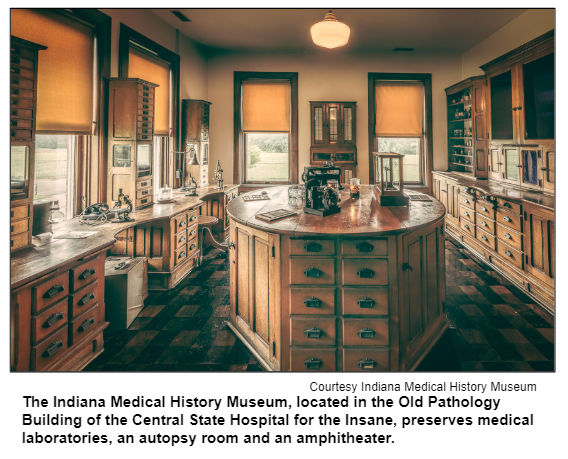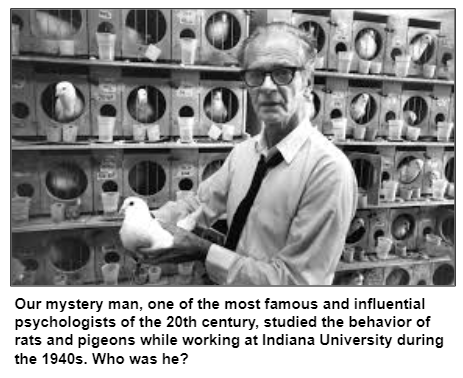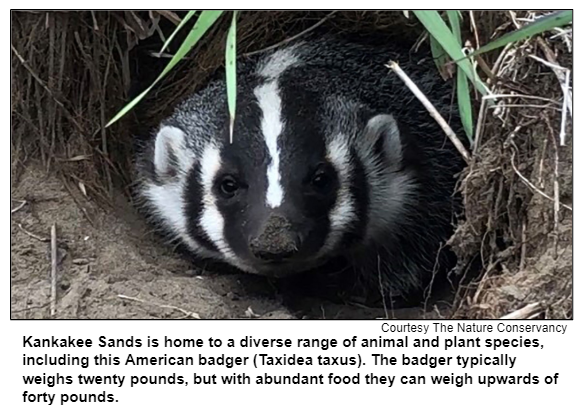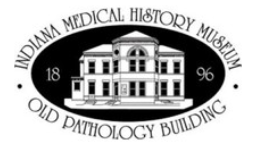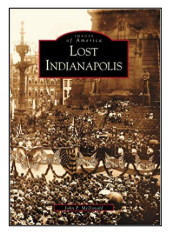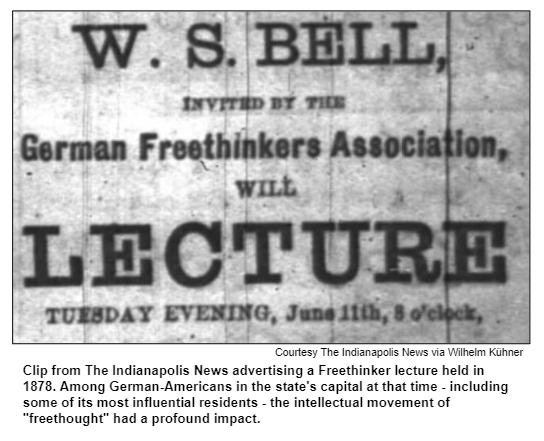
Saturdays, noon to 1 p.m. ET on WICR 88.7 FM.
Or listen live from anywhere on WICR Online!
Our call-in number during the show: (317) 788-3314
June 1, 2019
From pathology building to medical history museum
During the 1890s on the Indianapolis campus of what was then called Central State Hospital for the Insane, brain research was undertaken in the brick building that came to be known as the Old Pathology Building.

In 1969, more than 20 years before the closing of Central State as a psychiatric hospital, the Old Pathology Building - with most of its original furnishings, specimens, equipment and records - became the Indiana Medical History Museum.
The museum's path forward has not been smooth; it has faced challenges ranging from what Indiana Landmarks calls its "out-of-the-way location" west of the White River at 3045 W. Vermont Street to deterioration of the 1890s structure, including roof and masonry problems. In 2015, the Medical History Museum was placed on Landmarks' annual 10 Most Endangered Sites list.
Now, as the museum described as a "hidden history gem" celebrates its 50th anniversary, major improvements have been initiated. In September, an Indiana Historical Bureau marker commemorating the Old Pathology Building will be erected on the site.
As we explore the captivating history that has unfolded in the pathology building-turned-museum - where jars of human brain tissue and historic medical equipment are displayed - Nelson will be joined in studio by:
Sarah Halter, the museum's executive director since 2014. She is a board member and past president of the Association of Indiana Museums.
- And Norma Erickson, a board member of the museum and a medical historian. She was a Hoosier History Live guest in 2018 for a show about the history of African-American health care in Indianapolis.
Next to the museum, the former campus of Central State has become the site of apartments, single-family houses and businesses - both in historic and newly constructed buildings. Along with other state mental health hospitals, Central State was closed in 1994.
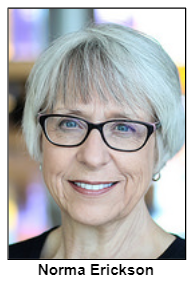
During the 1920s and '30s, neurosyphilis was a major focus of the medical research undertaken in the building. Before the introduction of penicillin in the 1940s, untreated syphilis in the tertiary stage was correctly understood as a frequent cause of mental illness.
The Indiana Medical History Museum opened in 1969, three years before the two-story structure, considered to be the oldest surviving pathology building in the country, was added to the National Register of Historic Places.
Today, in addition to the exhibits and tours at the museum, its historic amphitheater is used for presentations open to the public on a range of medical history topics. Speakers have included Indianapolis-based medical historians Dr. William McNiece and Bill Beck, who were Hoosier History Live guests in 2014 on a show about epidemics throughout Indiana's history.
History Mystery
One of the most famous and influential psychologists of the 20th century lived in Bloomington during the 1940s.
The psychologist was not born in Indiana and didn't grow up in the Hoosier state. However, as the chair of the Psychology Department at Indiana University for several years during and after World War II, he brought national attention to the campus for his theories about the brain and how it influences behavior.
Considered a "radical behaviorist," by others in his field, our mystery man recruited several like-minded psychologists and researchers to join the faculty. They worked extensively in labs with rats and pigeons, exploring how their actions were shaped by punishment and reward. In 1948, the influential psychologist left IU to teach at Harvard University.
Question: Who was the famous psychologist?
Please do not call in to the show until you hear Nelson pose the question on the air, and please do not try to win if you have won any other prize on WICR during the last two months. You must be willing to give your first name to our engineer, you must answer the question correctly on the air and you must be willing to give your mailing address to our engineer so we can mail the prize pack to you. This week's prizes: two passes to the Indiana History Center, courtesy of Indiana Historical Society, and two passes to the James Whitcomb Riley Museum Home in Indianapolis, courtesy of the James Whitcomb Riley Museum Home
Roadtrip: Kankakee Sands and Willow Slough in Newton County

Kankakee Sands, with about 7,000 acres, is home to a variety of native birds, wildflowers and plants and offers a rare glimpse into an ecosystem that has been severely altered by modernity: as Terri explains, less than one percent of Indiana's original prairies survive. Native birds such as the Henslow's Sparrow rely on Kankakee Sands for their nesting grounds, and the area shelters about 600 native plant species. In a recent restoration effort, The Nature Conservancy returned bison to the prairie at Kankakee Sands for the first time in 200 years.
Neighboring Willow Slough Fish & Wildlife Area is primarily used for hunting and fishing and covers almost 10,000 acres. (The term slough is pronounced "slew" and denotes a swampy, muddy area.) With 1200 acres of open water and marshes it's also a great spot for birding, especially during spring and fall migration. Waterfowl rely on Willow Slough as a resting place on their way to and from nesting grounds further north.
For those who love foraging, we hear that Willow Slough is an excellent place to look for wild blackberries, blueberries and raspberries; walnuts and spring and fall mushrooms may be gathered from the property as well.
Join Terri for this Roadtrip back in time to an Indiana few of us have experienced!
Nelson Price, host and historian
Molly Head, producer/project manager, (317) 927-9101
Michael Armbruster, associate producer
Cheryl Lamb, administrative manager
Richard Sullivan, senior tech consultant
Pam Fraizer, graphic designer
Garry Chilluffo, special events consultant
Please tell our sponsors that you appreciate their support!

 Acknowledgments to Monomedia, Visit Indy, WICR-FM, Fraizer Designs, Heritage Photo & Research Services, Henri Pensis, Aaron Duvall, Chloe Tyson, and many other individuals and organizations. We are independently produced and are self-supporting through organizational sponsorship and through individual contribution at the yellow button on our newsletter or website. For organizational sponsorship, which includes logos, links, and voiced credits in the show, contact Molly Head at (317) 927-9101 or email her at molly@hoosierhistorylive.org. Our media reach continues to grow via podcasting and iTunes.
Acknowledgments to Monomedia, Visit Indy, WICR-FM, Fraizer Designs, Heritage Photo & Research Services, Henri Pensis, Aaron Duvall, Chloe Tyson, and many other individuals and organizations. We are independently produced and are self-supporting through organizational sponsorship and through individual contribution at the yellow button on our newsletter or website. For organizational sponsorship, which includes logos, links, and voiced credits in the show, contact Molly Head at (317) 927-9101 or email her at molly@hoosierhistorylive.org. Our media reach continues to grow via podcasting and iTunes.
Thank you!
We'd like to thank the following recent, new and renewal contributors whose donations help make this show possible!
- Perry and Melanie Hammock
- Jim and Bonnie Carter
- Barbara and Michael Homoya
- Noraleen Young
- Barbara Wellnitz
- Phil and Pam Brooks
- Russ Pulliam
- Roz Wolen
- Marion Wolen
June 8, 2019 - coming up
German freethinkers in Indy
During the 19th century, Germans became the largest European ethnic heritage group in Indiana. In 1870, immigrants and German-Americans in the state's capital - including some of its most influential residents - formed the Freethinker Society of Indianapolis.
The immigrants, who included political refugees from a failed revolution in Germany in 1848, had a history in their homeland of "freethought," which our guest, public historian Justin Clark, describes as "open evaluation of religion based on the use of reason." Justin, the communications director for the Indiana Archives and Records Administration, will share insights about the German freethinkers and their impact on their adopted hometown of Indianapolis.

Other key figures in the Freethinker Society of Indianapolis included its co-founder, Herman Lieber, who immigrated from Germany in the 1850s and became the patriarch of an influential, multi-generational Indianapolis family. Lieber opened a small frame shop that became one of the most respected art dealerships of its era, employing more than 200 people.
According to Justin, the Freethinker Society was "one of the city's first non-religious organizations and facilitated freethought ideas and practices through educational lectures and social gatherings." At the society's events, these "philosophical radicals" discussed such topics as science, women's suffrage, socialism and theology.
Freethinkers included German immigrant Philip Rappaport, who, in 1873, bought the German Daily Tribune, the city's dominant German-language newspaper of the era, which later changed its name to the Indiana Tribune. During a Freethinker Society debate, Rappaport changed his position on women's suffrage, becoming an advocate despite earlier opposition.
In a blog that Justin wrote for the Indiana Historical Bureau, he notes that, in Kurt Vonnegut's semi-autobiographical book Palm Sunday (1981), he describes his great-grandfather's freethinking as the novelist's own "ancestral religion."© 2019 Hoosier History Live. All rights reserved.
|
